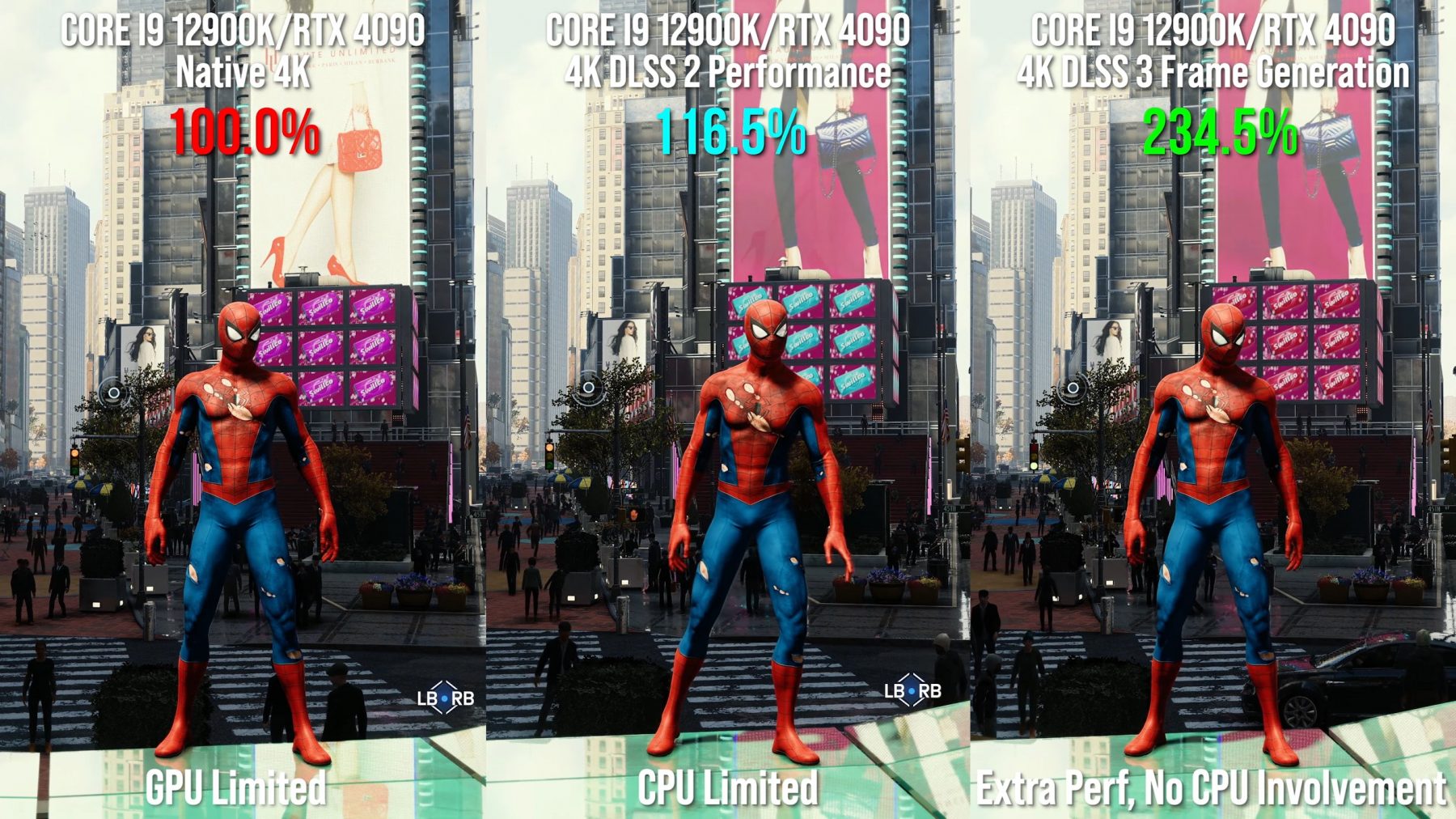The RTX 4090 will not be available until the mid of October, which is also when performance evaluations are scheduled to be publicized. In this regard, the information provided by Digital Foundry today is similar to what NVIDIA has already presented, but with relatively more depth. Those who anticipate DLSS3 pixel analysis will be dissatisfied, but those who want to check how much faster DLSS3-enabled games can run will undoubtedly find something of interest.
Cyberpunk 2077 (Overdrive RT version), Spider-Man: Remastered, and Portal: RTX were made available to Digital Foundry. All three games will have DLSS 3 support, although only reviewers have access to it at this time. It is important to note that even when DLSS3 upgrades are issued, GeForce RTX 30 and 20 GPUs will not support the technology (at least not now).
Digital Foundry was restricted from displaying framerates. However, they were permitted to compare performance using percentages. The post and 30-minute video are essentially a demonstration of DLSS3 in action, with comparisons to native and DLSS2 footage. Depending on the game, CPU restriction, and whether the capture was in activity, DLSS3 can improve performance by 2x to 5x.
DigitalFoundry claims that NVIDIA DLSS3 generates entire frames based on game data such as motion vectors and optical flow analyses. By buffering frames, additional latency is added. This issue can be resolved using NVIDIA’s Reflex technology, which is now part of DLSS3. A cursory examination of frame times reveals that the latency is more than with DLSS but less than directly generated frames. These results are predicated on constrained testing and a single resolution so that they may vary.
This performance research will most likely be backed up with a detailed dive into DLSS3 technology once the review embargo is lifted.





